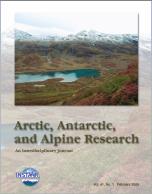The papers cited by Kullman (2008) in his comment (some of which we were unaware of at the time of writing our paper) raise an important issue in any revisitation study, namely the comparability of studies. To recapitulate, we (Moen and Lagerström, 2008) found a significantly reduced species richness since the 1950s (Kilander, 1955) on eight out of nine visited mountain summits, while Kullman (2007) found increased species richness on two of those summits 2 years later. Kullman suggested that the difference in species richness between our and his studies lies in sampling dates. This is an interesting hypothesis that, of course, can be tested. However, neither he nor we presented data with which to evaluate this. We based our sampling scheme on previous experiences with mid to high alpine vegetation (e.g. Moen, 1993;Virtanen et al., 1997), where we have seen plants initiating growth immediately after (or even before) snowmelt. High altitude vegetation has a well-adapted phenology to the short growing season, and almost all species are perennial. Thus, we reasoned that the important criterion to base our sampling on was that there were no remaining snow patches at our sites, which would make it difficult to find species. Kilander (1955) himself visited the mountains between 4 July and 31 August on different mountains and in different years, but we do not know at which dates he visited the mountain summits. Kullman further suggested that invading species from lower altitudes have a different phenology and that they cannot be seen until late in the season. This is of course possible, and it raises important questions for future plant community dynamics as both current vegetation and invading species may be out of phase with the prevailing climate. Other differences between our study and that of Kilander's (and that of Kullman's), which we discussed in our paper, were single-year vs. multiple-year observations and differences in sampling area and effort.
Finally, we would like to point out that one of the most interesting results in our study was not changes in species richness per se but the high turnover of species caused by species- and mountain-specific responses. For instance, many species had disappeared from some mountain summits and appeared on others when we compared our data set with Kilander's. These observations concern species commonly found at these altitudes, and which should be adapted to the length of the growing season. None of the species were so called “forest species” sensu Kullman (2008). These results should thus not be sensitive to phenological differences between sampling dates.





